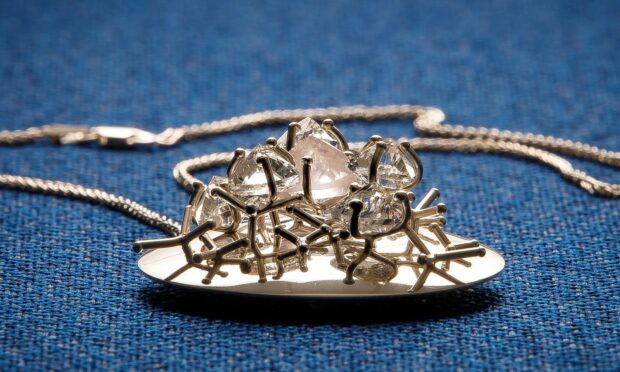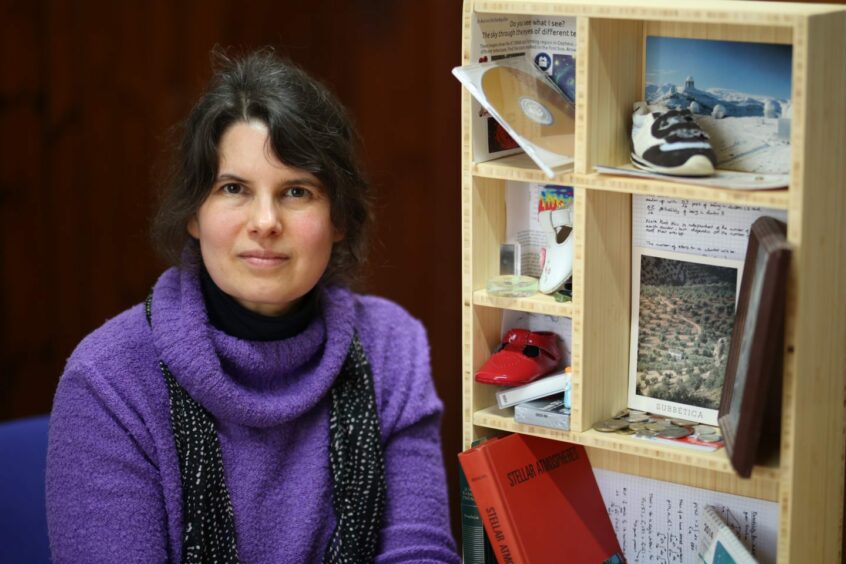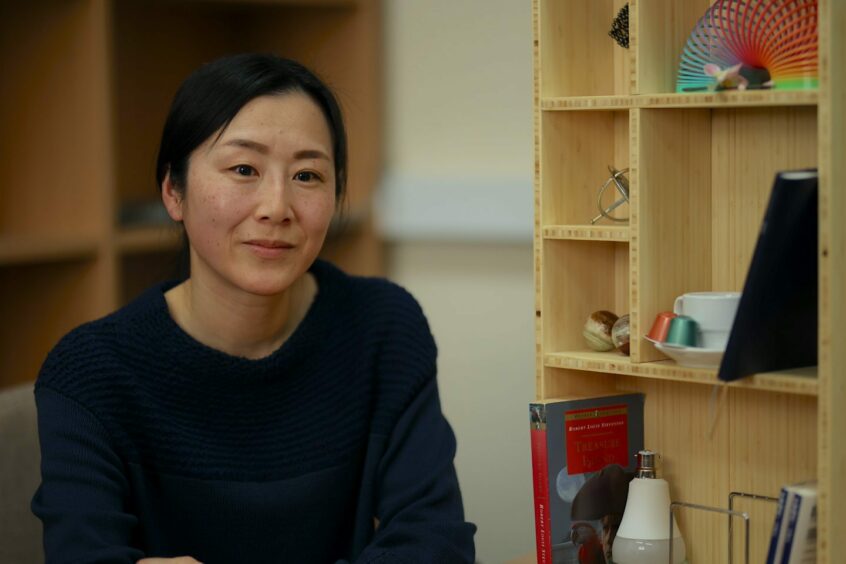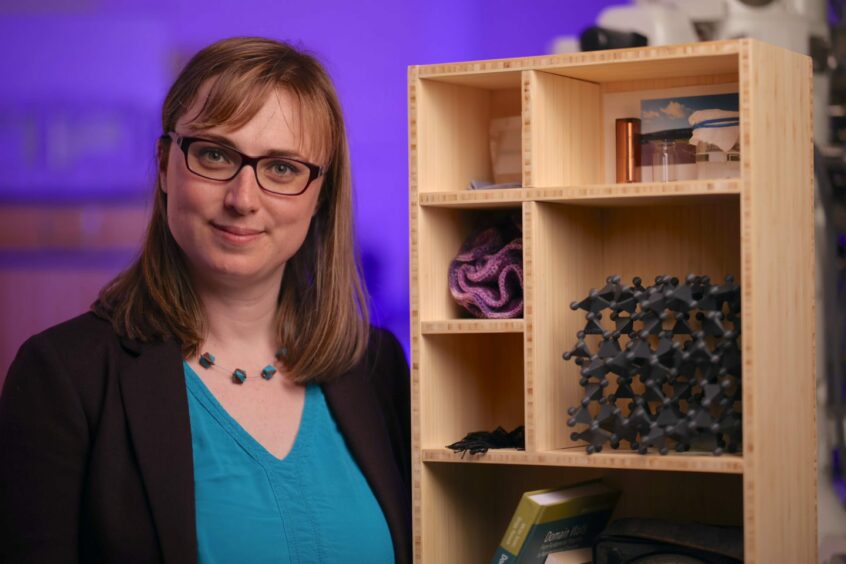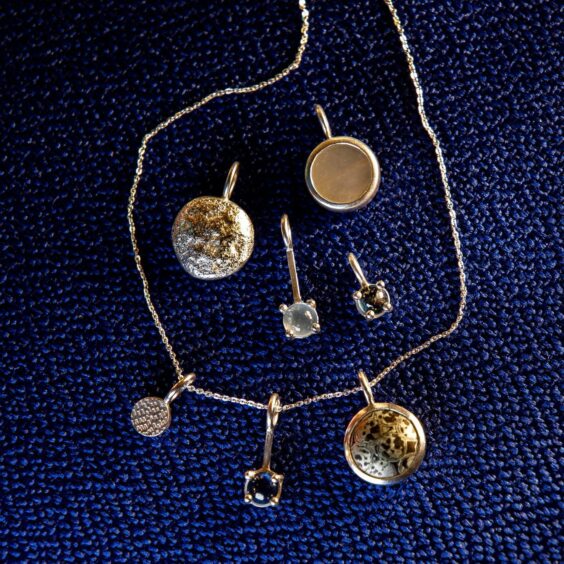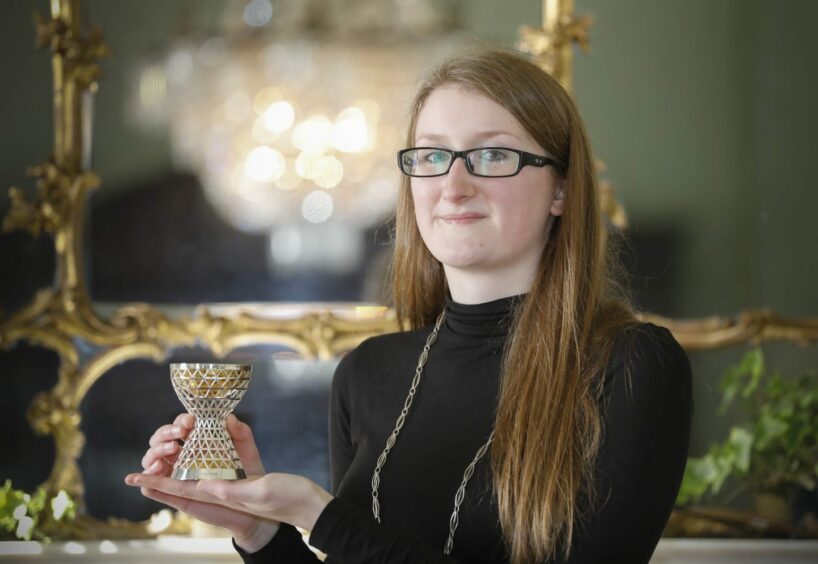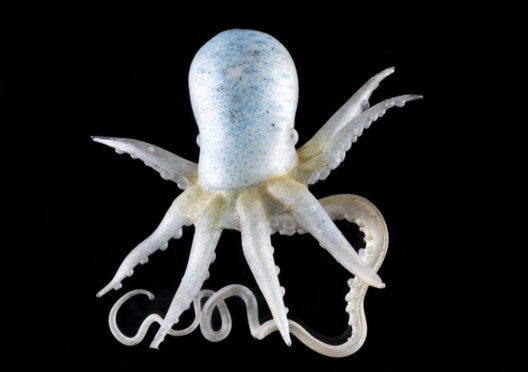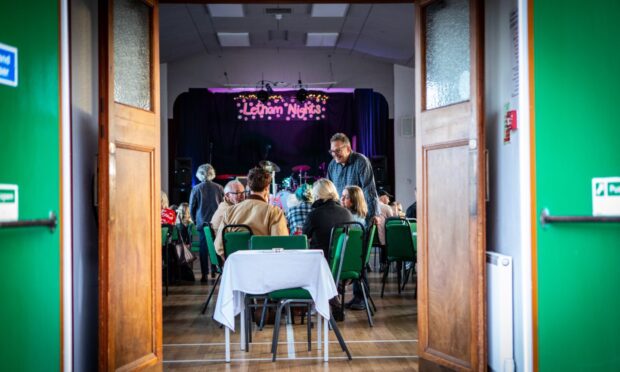A new exhibit at The McManus highlights the contribution of some of the University of Dundee’s female scientists through a striking method – the creation of original jewellery for each subject.
Sited in the city museum’s Making of Modern Dundee gallery, Subjectified: Women, Science and Art focuses on the backgrounds and research of three particular academics.
Stars, planets and particles
One of them, Spanish astrophysicist Dr Aurora Sicilia Aguilar, studies star and planet formation, while material scientist Dr Charlotte Cochard, originally from France, is interested in atoms and even smaller particles.
Finally, Japanese theoretical astrophysicist Dr Soko Matsumura is concerned with how planetary systems form and evolve.
For each of these experts, Glasgow-based silversmith Dr Karen Westland has devised a unique piece of jewellery reflecting their pioneering work.
Karen was inspired to embark on this project while studying her own doctoral research at the university’s school of physics, she explains.
Rise of women
“Until the Arts and Crafts movement in the late 19th Century, almost all jewellers were male – now the sector has radically changed to a large majority being female,” she says.
“The physics sector in the UK has a male majority and I thought the project could start based on this difference in educational and social experience.”
Once she found her subjects, Karen interviewed them to find out more about their life stories, personal qualities and even their preferences for accessories, to create the bespoke objects.
For Dr Aurora’s pendant, the maker used materials we know are actually found in stars, namely silver, quartz and strands of iron that run through the gemstone.
Inspired by science
Dr Charlotte’s kinetic brooch is inspired by the structure of crystals and how they move under pressure, while Dr Soko is represented by a necklace that includes a modular pendant: large or small parts can be strung together in different combinations.
Just as its muse might model on a computer the conditions in which different sized planets form.
As Karen often creates special objects for clients, much of this process was already familiar to her, though here the extra challenge was designing pieces that could be appreciated behind glass.
Yet the jewellery is only part of the story, she points out.
“Not only will the display hopefully offer viewers a snapshot into the world of physics and better representation,” she says, “But also offer my collaborators a deeper understanding of themselves.”
Cabinets of curiosities
Karen has also devised displays of objects for each subject, inspired by old-school cabinets of curiosities that predate museums.
These show how their subjects’ scientific enquiries fit with their lives and wider interests.
She has had these made made from sustainable materials such as cold-pressed bamboo to hold items important to the scientists.
Dr Aurora has donated coins from her global travels for research and baby shoes from her three children.
As well as objects that reflect Dr Soko’s passion for outer space, she has included examples of traditional Japanese literature, another of her interests, alongside coffee machine pods.
While some of the science may be hard to grasp, we can all appreciate the need for a decent brew.
- Subjectified: Women, Science and Art is on show at The McManus, Dundee, until March 21.
